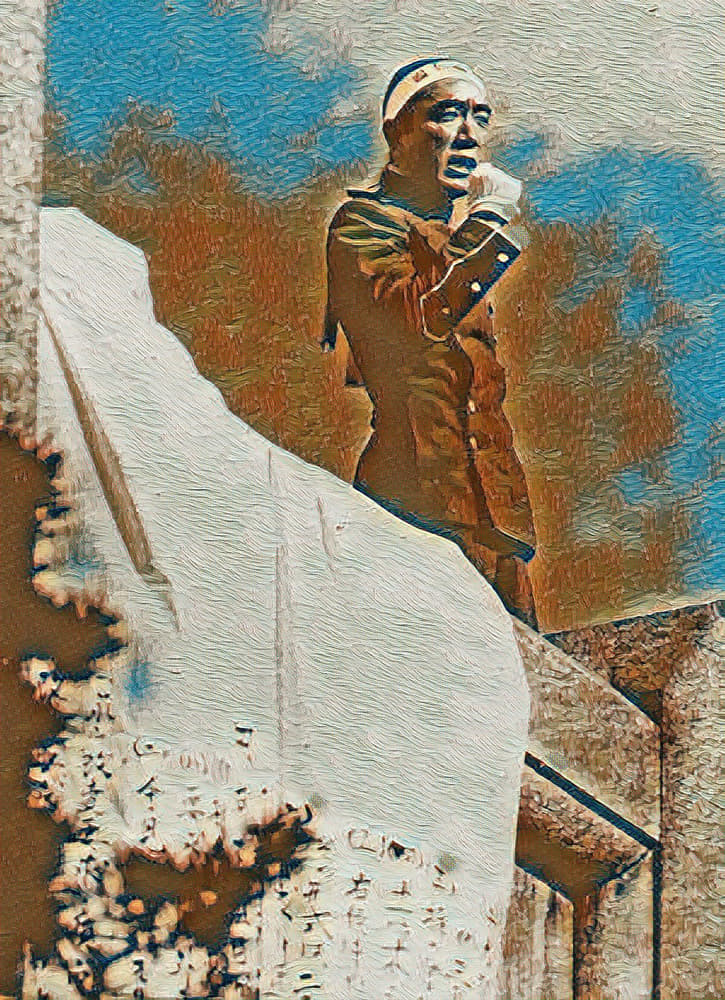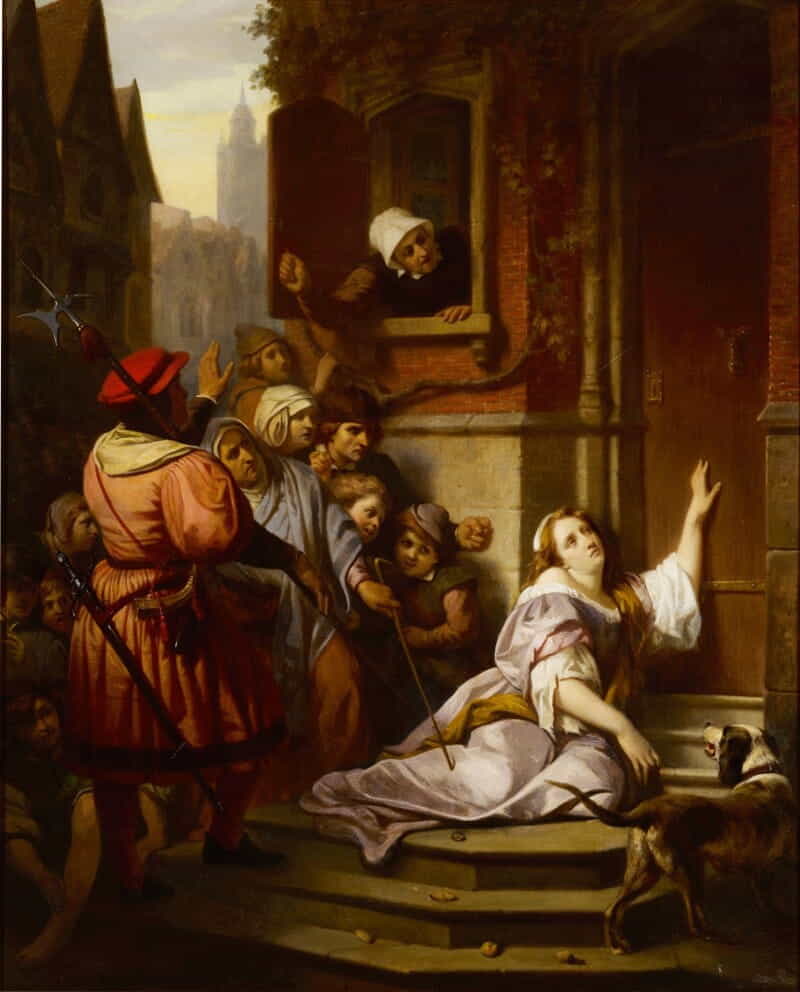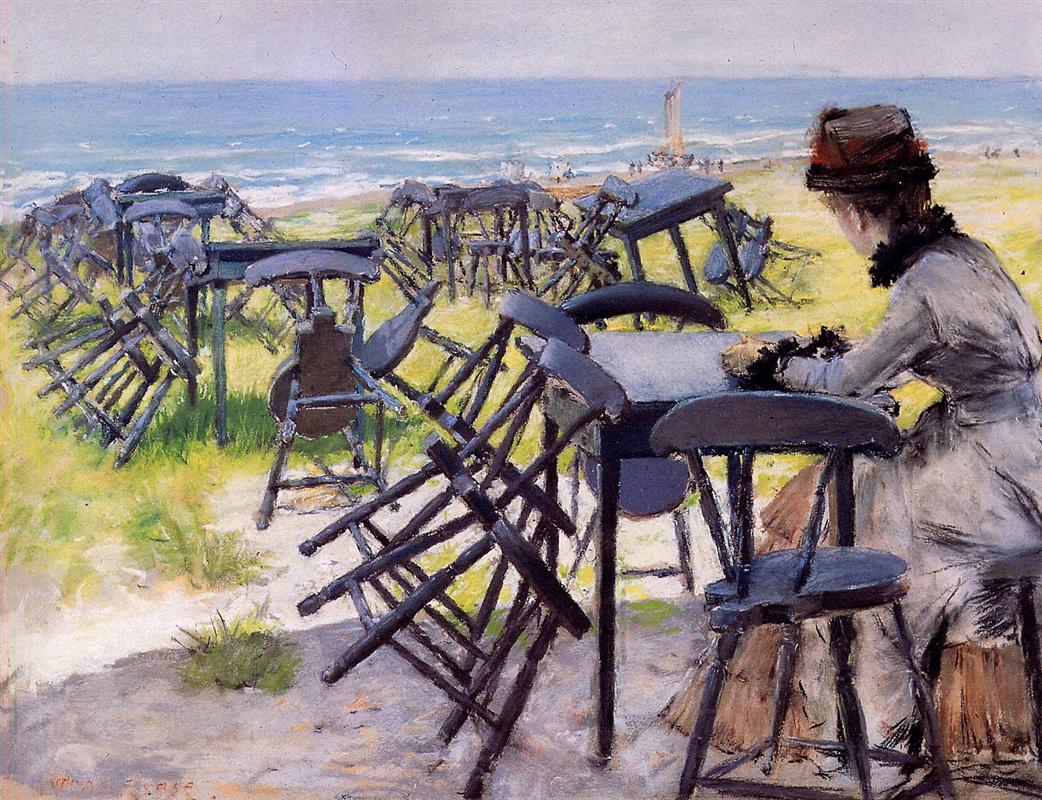The mode of death of a novelist is rarely a cause for concentrated attention by a public beyond that of his or her readership. When, on November 25, 1970, the Japanese writer Yukio Mishima died, it was in a manner that made an impression on the cultural world quite out of proportion to his diminutive physical stature.
On that date, Mishima, accompanied by several subordinates in his private militia, stormed into the Tokyo headquarters of the Jieitai, the Japanese Self-Defense Force, and took a general hostage. He then demanded an audience with the assembled soldiers from the attached garrison. When this was granted, he called for them to throw off the post-WWII ‘Peace Constitution’ of 1947 and return Japanese sovereignty to the Emperor.
The soldiers, young men already a quarter-century from the nationalist Japan of the pre-war period, jeered him. He cajoled them, to no avail. Finally, in disgust, he shouted the traditional salute of nationalist Japan—Tenno Heika Banzai! (Long Live the Emperor!)—and returned to the room where the general was held hostage by his compatriots. There, he committed seppuku, the samurai form of ritual suicide, disemboweling himself with a dagger. The rite was botched, however, by his second or kaishakunin, whose job it was to behead Mishima with a single blow from a sword immediately upon completion of the abdominal cut. His first strike landed on Mishima’s back, and two more were needed to remove his head from his body, before the kaishakunin himself was beheaded by another member of the militia group.
Mishima’s final act–not only the suicide but the effort to rouse the troops and bring about a popular uprising—was a total disaster by any reasonable estimate. But owing solely to this spectacular, scandalous end, his reputation in some circles of both left and right grew and evidence for this can still be found a half-century later. Most of his political admirers on the right—at least if my own anecdotal experience interacting with them online is indicative of anything–have read little of his writing. But it is there, if anywhere, that we must look for evidence if we want to evaluate his contribution to conservative ideology.
Mishima wrote a voluminous amount over a career of a quarter-century, but it is the work of his last five years that is most relevant for our purposes. In 1965, he began work on a multi-volume novel, titled The Sea of Fertility, that dealt with one remarkable individual incarnated four times in different human forms. Each incarnation is personally known by another character, Honda, who appears in every volume of the novel and reflects through the various reincarnations of his friend on the meaning of human life. In August of 1967, after the completion of the first volume, Spring Snow, Mishima wrote a short interpretive commentary on Hagakure, a classic text from the early 1700s on bushido, the samurai code of war and ethics. This work displayed Mishima’s interest in the traditional principles that informed the Japanese warrior class during the country’s feudal period. A central theme emphasized in his commentary is the superiority of honor to mere survival. A vision of one’s own death should be before one’s eyes daily, as the samurai pledged, in situations of uncertainty during battle, to choose always to wade into the fray and embrace death rather than calculate and strategize to survive solely for the sake of surviving.
The next year, 1968, Mishima completed both the second novel of the tetralogy, Runaway Horses, and an autobiographical book that may well be the key text in understanding his view of life, art, and politics, Sun and Steel. Runaway Horses told the tale of the reincarnation of Kiyoaki, the male in the couple from Spring Snow, as Isao, a militant student who carries out an act of political violence Mishima closely modeled on an historical event. In 1877, a group of former samurai revolted against the Meiji government and what they saw as the Westernizing influence it represented, striking against military and political targets until the authorities brutally put them down. Several of the rebels committed seppuku rather than be taken by the enemy. Isao engages in a similar plot, killing a businessman who represents the destruction of traditional Japan for profaning a religious shrine, then, at the novel’s culmination, taking his own life by the samurai rite as the sun rises before him and the police close in. This novel is perhaps the most striking literary document Mishima ever produced. The dramatic narrative is enthralling, and Isao is a compellingly committed character, precisely because Mishima has written him in such a way as to present his actions as more purely rooted in a traditional ethic than was likely the case in the author’s own ostensibly similar final act.
Sun and Steel describes autobiographically Mishima’s commencement, in his third decade of life, of the ascetic and aesthetic regime of physical training that he presented as his modern effort to reinvigorate bushido. Here and in the commentary on Hagakure Mishima expresses abhorrence of the way the American presence in Japan was corroding Japan’s unique world of beliefs and values. He also rejects the manner in which the modern division of labor has caused scholars and warriors to separate themselves one from the other with a completeness that warps both callings, and negates the very possibility for a man to fully know how to live and how to die. The writer or scholar separated from the martial practice and values, in Mishima’s analysis, can only be a flabby, weak wordsmith, and a soldier without wide reading and aesthetic cultivation will not escape vulgar barbarism.
These themes—the rejection of cultural imperialism and embrace of the organic cultural originality of each nation, and the critique of the dilution of the potency of traditional masculinity—are frequently encountered in some Western conservatisms. To this degree, Sun and Steel might be read as a properly right-wing text. Yet, much of the book is dominated by the narcissism that had marked Mishima’s personal life from his sensitive, emotionally withdrawn, and rather sickly youth. There is much evidence of the extra-political motivations for the ethic he expresses here, specifically, in his pathological and sexually perverse obsession with the violent death of young men, and especially soldiers. Physical vigor and fearless disdain of death are presented as values here, but they are corrupted by the deep nihilism that infects the entire text. The ethic of Sun and Steel accepts and even longs for annihilation in the void.
This nihilism is made apparent in the final two major books he wrote prior to his death. Throughout 1969, Mishima worked on the third novel in The Sea of Fertility collection, The Temple of Dawn, which is dedicated to a lengthy discourse on religion, specifically the doctrine of reincarnation that informs the entire tetralogy. The Kiyoaki/Isao character reappears here as Ying Chan, a young Thai princess who dies, like the earlier two incarnations of the same individual, at the age of 20, this time from the bite of a cobra. The last year of Mishima’s life was dedicated largely to completion of the final volume, The Decay of the Angel, which was mailed to the publisher on the very morning of the assault on the Tokyo military compound. In this final novel of The Sea of Fertility, Honda returns as an old man to visit his friend Kiyoaki’s mistress from Spring Snow, Satoko, who is now an old woman and the abbess of a nunnery. To his astonishment, Satoko claims never to have known anyone meeting Kiyoaki’s description. Honda’s entire worldview and his sense of his own identity melt away to nothingness: “If there was no Kiyoaki, then there was no Isao. There was no Ying Chan, and who knows, perhaps there has been no I.” The novel concludes with Honda being led by Satoko to a sunlit garden, where cicadas call and carnations bloom, “a place that had no memories, nothing.”
This nothingness is where the Western conservative necessarily takes his leave of Mishima as a political theorist, even if he might yet find aesthetic value in the brilliant literary expression of an ethic that he finds so personally unacceptable. The goal of human striving as the nothingness of escape from the cycle of rebirths is an Eastern value with no resonance in our traditions.
The culture of the Christian West—not the materialist consumer culture Mishima despised in its imperial strangulation of Japan, but rather the West’s traditional culture of order and faith—offers another way toward the purity of action Mishima described in his writing, and Mishima himself recognized the fact. In his commentary on Hagakure, he cites Toynbee favorably on Christianity’s power to “gather…so many avid converts so suddenly…because these people had fervently wished for a goal worth dying for.” Purity of action is, according to Hagakure, the only value in human life worth pursuing. The outcome of the action—success or failure in external terms–is purely secondary to that fundamental. It perhaps would not have escaped Mishima’s attention that some number of those early Christians to whom he affirmatively alludes were the first martyrs of the faith, who, hearing their captors tell them that if they would but make a sacrifice to one of the Roman idols their transgressions as Christians would be forgiven, haughtily shook their heads and walked to the stake or the crucifix to die—not to cease existing, but to refuse the very power of death. Later, on numerous occasions, many took up arms to defend their church and their civilization against cultural invaders at least as formidable as the ones Mishima opposed.
Mishima’s nihilism posits non-existence as the final goal toward which political action—indeed, all action—moves. Western conservatism, at least insofar as it is infused with the spiritual energy of the chief religious system of the West, defies this void and, in the manner so eloquently expressed by Miguel de Unamuno, overcomes it in its furious willful refusal to come to terms with mortality. The dangers of Mishima’s ethic are only too apparent: empty, narcissistic embrace of death for the sake of nothing more than death itself. Our danger in the West is something quite different: it is the quietism that can descend upon us when we are too assured of the gift of immortality. The victory over death is not given passively in our tradition. It must be won through furious striving, even if the striving is only internal. And even a solely internal striving will inevitably and necessarily lead to action in the world when others attempt forcibly to rob us of the cultural scaffolding within which such spiritual pursuits are taken as the highest good. When cultural decay erodes the space within which such striving is to take place, men will have to act, or the striving will die along with the culture that envelops and shelters it.
The ethic from which Western conservatism draws its deepest inspiration is evidently more consistent with the furious striving of humankind than nihilist aestheticism such as that we find in Mishima. It must not however forget the physical vigor and the fervent desire so vividly expressed in his literary work. Of course, it is not the specific form of Mishima’s action—a ritual suicide—that might inspire Western conservatism. It is the principle of the pursuit of vigorous action that is worshipful of honor and tradition. In the West, too much of what is left of our religious tradition today fails in its inability to provide real motivation for courageous action in resistance to the cultural demolition of our traditions, and one can see the results in the ranks of young men on the contemporary right who contemptuously reject forms of passive, feminized Christianity that offer no space for vigorous, masculine affect and action. Too much of contemporary Western Christianity in its more liberal forms has effectively embraced the secularizing processes that have led, in the United States specifically and throughout much of the West more generally, toward the same kind of cultural suicide to which Mishima’s Japan fell victim after the conclusion of World War II. Here, though, it is not an external military conqueror who oversees the death of our own traditional culture, but rather a deeply radical internal cultural elite who impose on the country an anemic, destructive doctrine of multiculturalist pluralism in a manner only slightly less vigorous than the occupying American pressure on Japan post-WWII.
I remember, long ago, when I was a young student just discovering Mishima’s writing, seeing a wheat-pasted poster on the wall of a building on the university campus where I was enrolled, put there by some radical leftist student group or another. It read “No Guts, No Revolution.” I thought then and now that this is a call to action that might be admired by conservatives, even if the revolutionary goal is abhorred. From the combination of our own cultural ideals and the Hagakure-inspired ethic of Yukio Mishima, the American right might perhaps fashion our own such slogan: “No Guts, No Counter-Revolution.”
Alexander Riley is a Senior Fellow at the Alexander Hamilton Institute for the Study of Western Civilization. He writes at Substack.
Featured: Yukio Mishima delivers a speech on the balcony of the Japan Ground Self-Defense Force (JGSDF) building in Tokyo, before committing Harakiri with a short sword, on November 25, 1970.


